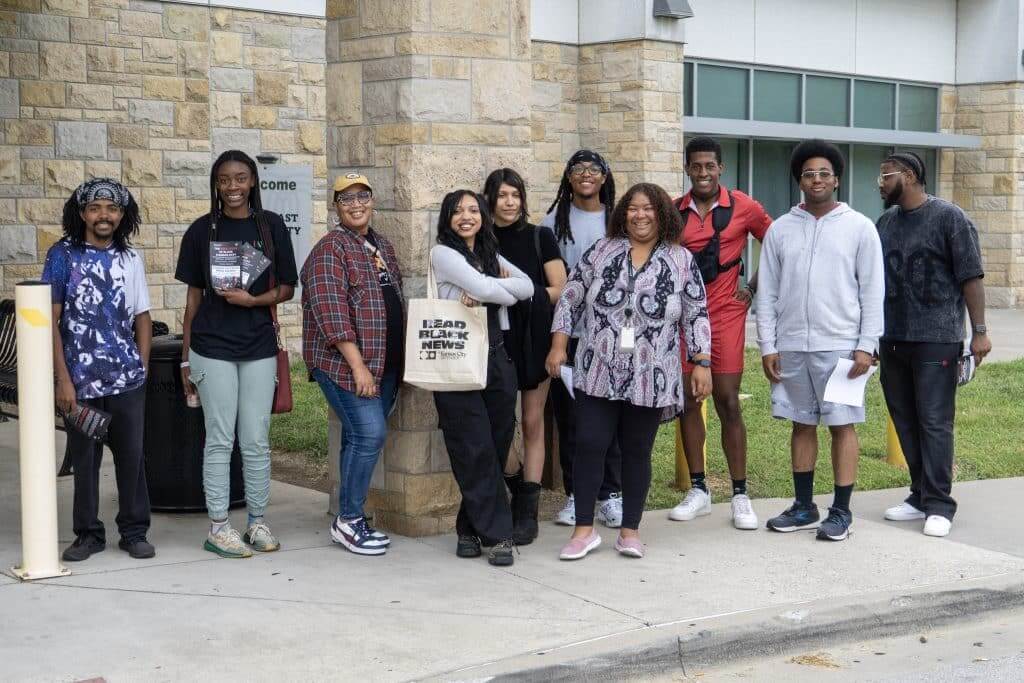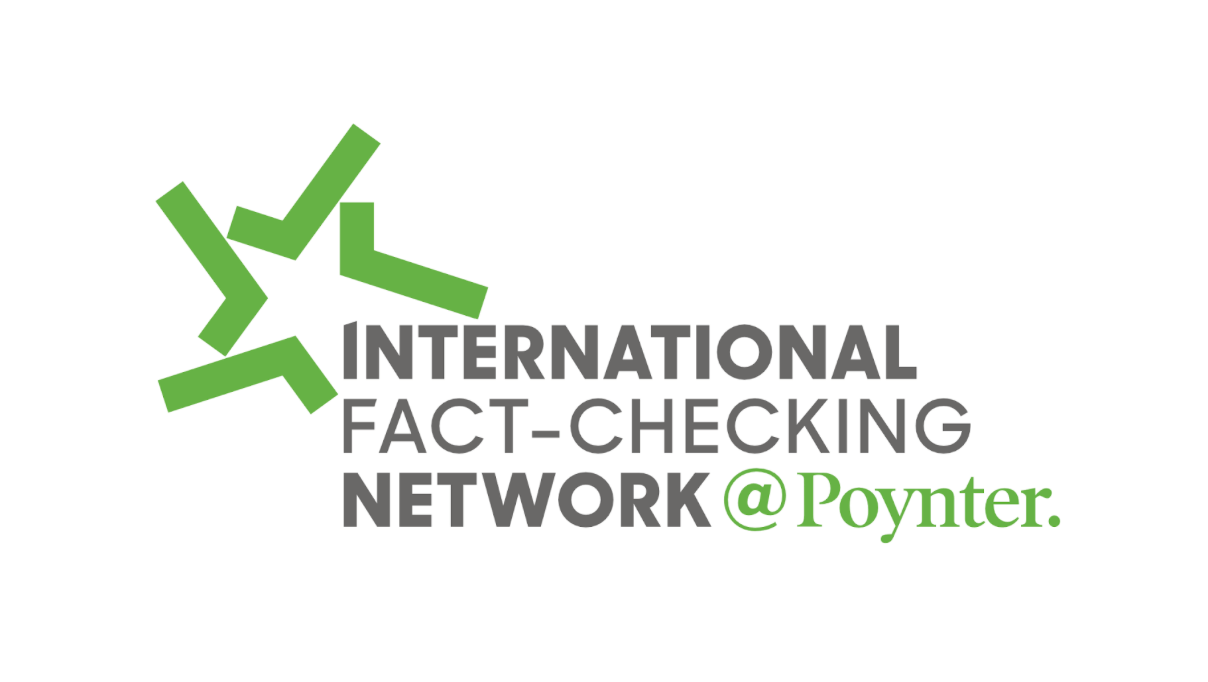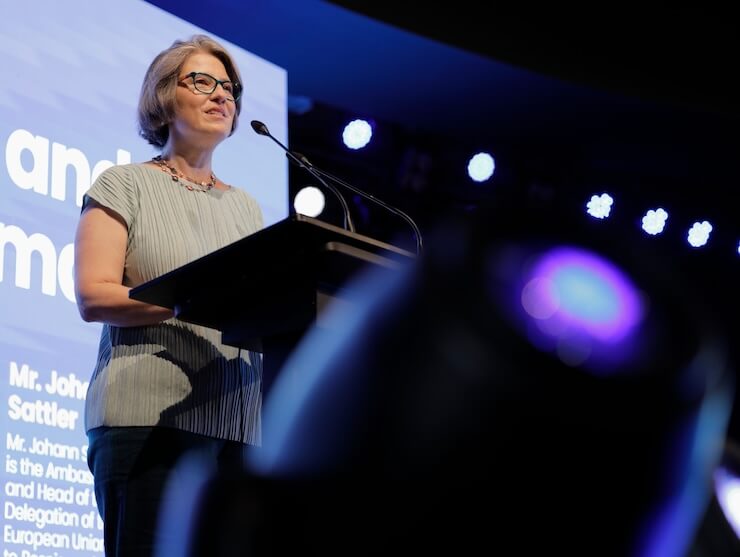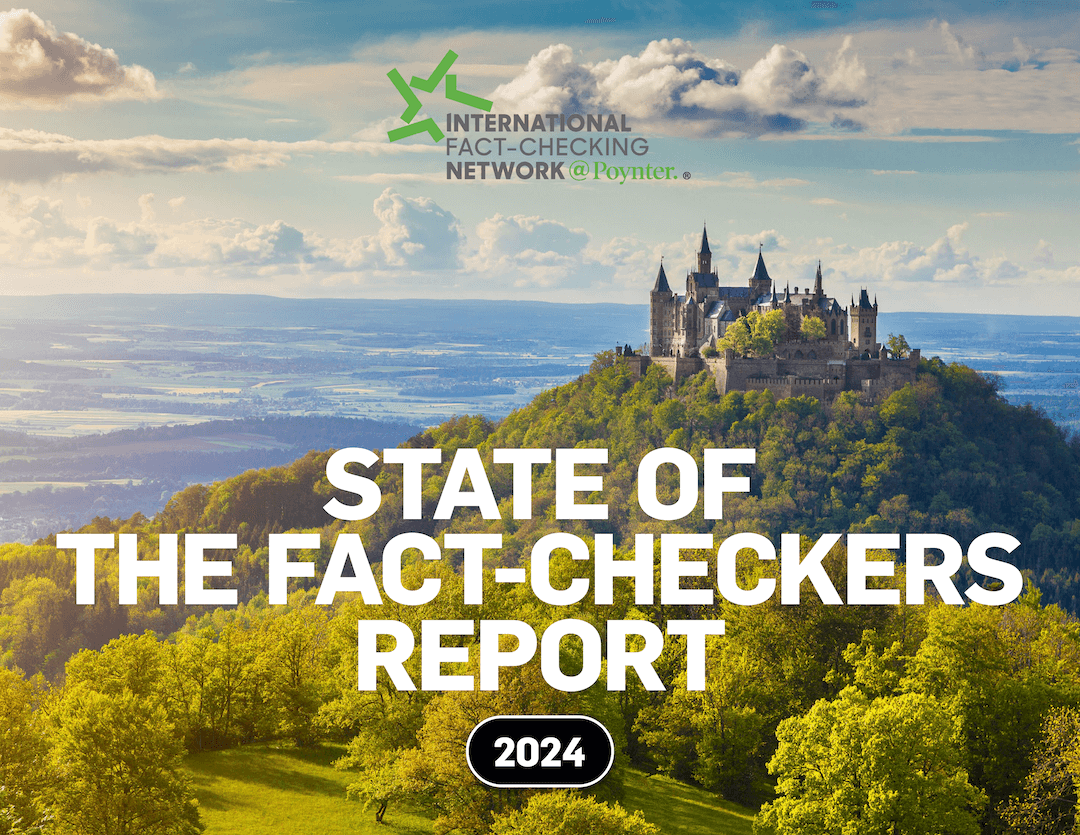Is Ryan Sorrell a journalist? He goes back and forth. Even after founding The Kansas City Defender, a Black nonprofit community media platform, Sorrell remains an organizer at heart.
But the Kansas City native has been researching the history of the radical Black press in the United States. “I’ve been reading people like Claudia Jones, who identified as a journalist,” Sorrell said. “Or Ida B. Wells, who identified as a journalist.” Learning more about the late Black female journalists and how they owned the label has made him more open to it.
For now, Sorrell believes “media organizer” is a more appropriate term for himself and his work at the Defender. And more recently, he said the Defender has pivoted to describing itself as a power-building community organization — as opposed to a news outlet.
“Our organization is interested in providing necessary information for the survival and flourishing of Black people in our region,” Sorrell said. “And so we’re not interested necessarily in journalism. We don’t really care, honestly, about a lot of so-called traditional journalistic norms. We care about the history of the radical Black press and what values and philosophies they gave birth to. And we honor those.”
On its website, the Defender says it is “first and foremost, a Black-led, Abolitionist organization. … When we refer to ‘abolition,’ we mean a world free from imprisonment, policing, and warfare, replaced by essential, life-affirming resources like food, housing, healthcare, arts, and education. Abolition is our vision and our practical organizing strategy. Therefore, we are not just a news outlet, we are a radical, Black-led power-building organization.”
In a time when the number of outlets dedicated to marginalized communities is growing, The Kansas City Defender serves as a case study of what it looks like to expand a newsroom’s role beyond the modern accepted definition.
And at the helm is Sorrell, who was named Emerging Leader of the Year last year by the Institute for Nonprofit News. He also received the 2023 MLK Community Service Award from the Southern Christian Leadership Conference.
Sorrell has been called a “visionary” and “information-dense,” in an endearing way.
“He was already a good person to begin with, but now Ryan is nothing short of a role model, to be honest with you,” said Joshua Taylor, Sorrell’s best friend who also works for The Kansas City Defender.
An upbringing steeped in Black media
Sorrell’s upbringing was steeped in Black media. His parents kept a personal library of books by Black authors at home. One of his favorite titles was the 1999 novel, “Monster,” by Walter Dean Myers. They also watched a lot of Black films. Sorrell remembered his mother owning one of the only remaining original editions of “Eyes on the Prize,” a documentary series about the history of the Civil Rights Movement in the United States.
From the more entertaining films, Sorrell recalls becoming aware of the nuances of Black life. “I think they call it the ‘mundane’ — finding beauty in the mundane basically.” He tries to highlight similar aspects of Black culture through The Kansas City Defender.
Sorrell said the more serious films gave him something important in his adult life: a reframing of what a hero could be. “I don’t know if a lot of people realize how impactful our heroes are on our worldview and our morals,” he said. “And having Black heroes not like superheroes, but like real people that existed in our history, gave me courage and a sense of self-identity. And that’s rooted in history as well.”
Sorrell doesn’t recall having a relationship with journalism early on in his childhood, but he does remember his parents having CNN on the TV sometimes.
Taylor, a senior cultural producer at The Kansas City Defender, met Sorrell in sixth grade when they ended up on the same Amateur Athletic Union basketball team. They’ve been tight ever since.
“People always wanted to be around Ryan, talk to Ryan. He was the starting point guard for our team,” said Taylor, whose position was shooting guard. “He was the best ball handler on our team. Ryan can dribble a basketball probably better than anybody in the state. From 2012 to 2014, he probably was one of the best basketball players in our state.”
Taylor and Sorrell soon started organizing together. As teens, they hosted parties at a local recreation center for other students. They charged at the door. “And we were packing out gyms with 3-400, 500 kids from surrounding high schools coming to our parties at seventh grade,” Taylor said.
In 2014, Sorrell was a freshman at Loyola University Chicago, during the beginnings of Black Lives Matter — a movement that began in response to the killings of Black Americans. That year, 18-year-old Michael Brown was shot and killed by police officer Darren Wilson in Ferguson, Missouri. Two years prior, Trayvon Martin, a Black teenager in Florida, had been fatally shot by George Zimmerman. The killings of Rekia Boyd and Eric Garner were also on the minds of Sorrell and millions of people worldwide.
Sorrell started a Black newspaper at Loyola. He called it The Black Tribune. The publication grew quickly and, at one point, had more than 20 people on staff. He skipped classes to run the publication. One semester, he ended up with a 0.9 GPA.
“I was about to drop out, actually, to pursue that full time. But of course, my parents were not very happy about that,” Sorrell said. “And so I ended up having to discontinue it pretty much and just focus on graduating.”
Sorrell went on to work at a Black think tank in Washington, D.C., for a year, studying artificial intelligence’s impact on Black communities in the U.S.
A ‘radical Black voice’ for Kansas City
Sorrell returned to Kansas City and became a full-time community organizer. He helped lead protests and mutual aid efforts in 2020 and 2021. Sorrell and Taylor co-founded a social justice organization called Black Rainbow.
Sorrell said he and other organizers always found themselves at the mercy of what he described as “white imperialist news outlets” — publications that are run or owned predominantly by white people that serve and build business models around a white audience.
He offered The Boston News-Letter as a historical example. First published in 1704, the small single sheet was the earliest continuously published newspaper in America, according to the Massachusetts Historical Society. “Within one month of their inception, they already sold slave ads and became the very first broker in United States history, which was a broker of enslaved Black people,” Sorrell said. “And so to me, that is the intersection of white capitalist imperialist journalism, because it covers the white, the capitalism, how capitalism influenced the slave trade, and imperialism as well.”
As he looked around Kansas City, Sorrell felt that some outlets still did not have the best interests of the Black community at heart. “And in many cases, the leadership of those institutions don’t even have the racial knowledge or awareness to be able to adequately report on what’s happening in the Black community or on the ground in grassroots movements.”
Sorrell also felt a radical Black voice was missing from the Black publications that existed in the city. And so in July 2021, after a year of organizing full-time, Sorrell once again teamed up with Taylor to launch The Kansas City Defender.
Taylor remembers thinking about how the news used to affect their social justice actions. “And anything we would do within our social justice organization, we’d have the news come and they could write a headline that could affect the entire demonstration or whatever it is that we were doing — whether that be negative or positive,” he said. “At this point, I think we kind of just realized, ‘Hey, we should just try and be the news. Let’s cover things in our city and elevate and uplift Black voices.’”
Sorrell said the publication’s voice was critical. “The redefining and returning to the roots of the radical Black press was very important to us,” he said. “And also, I would say, viewing ourselves as a community organization as opposed to a news outlet.”
An angel investor helped cover Sorrell’s food and gas to travel around the city and report stories. He recalled going to 18th & Vine, the city’s jazz district and a historically Black area of Kansas City with a thriving nightlife. He brought a rented camera and asked people: What are you guys up to tonight? He posted their answers on Instagram. “People liked that. They just liked seeing young Black people enjoying themselves,” he said. “So like that cultural piece — uplifting the positive culture that exists in the city — was something I wanted to do and that I didn’t see happening.”
Taylor remembered those early days documenting nightlife around Kansas City.
“We were just kind of working together like we always have,” he recalled. “It wasn’t necessarily a pinpoint idea we had. It was a pretty nebulous thing we were doing.”
Sorrell went to a houseless encampment and conducted interviews with people who lived there. Sorrell wanted their perspectives, pointing to a lack of coverage from actual people experiencing houselessness.
His expectations for the project were clear early on: “I really wanted to help amplify the voices and platforms of the people in our city who have been dehumanized, silenced and erased.”
Sorrell wanted to give voice to organizers and activists who are on the ground in Kansas City.
“I wanted to help really uplift the consciousness of our community.”
Sorrell and Taylor dedicated so much time to The Defender that they decided to step back from Black Rainbow to allow new leadership in.
The Defender now covers several themes: justice, culture, food and restaurants, U.S. and global and LGBTQIA2S+. Under “justice” are several smaller beats: housing, politics, climate and education. And under “culture” are five other beats, including Black business and health and wellness.
Staff has also created what it calls The Defender Handbook — a guide primarily crafted for Black media workers. It covers reporting on policing and public safety, building community, and organizational structure, among other topics.
A sampling of the Defender’s recent articles showcases the publication’s breadth of coverage: Kansas City’s 2024 Black Voter Guide, The Show MO Act in Missouri and its Film Industry Continue Hollywood’s Legacy of Neglecting Black Filmmakers, Organizers Warn Kansas Citians As Local Nuclear Components Plant Plans to Double in Size This Year.
When asked what the ideal Defender story is, Sorrell said he wouldn’t categorize them that way. The publication’s mission, he said, is rooted in telling stories in a “no-words-minced, plainspoken way” — particularly when it relates to poverty, police violence, housing, and more.
More from Poynter: The first African-American newspaper, Freedom’s Journal, was founded in 1827
Funding and reporting challenges
When Sorrell first waded into this space, he recalled having “zero idea” of what philanthropy was, how to get grants, or how to write grants. He didn’t know about the language people use — words like “impact.”
“There’s this whole language that nonprofit philanthropy uses. I knew that what we were doing was important, and I knew that I could see the impact,” he added, “but a lot of these foundations have their own ideas of what impact is. And they might have said that they were looking for innovative Black-led newsrooms, but they still had a lot of expectations of traditional journalistic practices. And so being able to articulate what we do was a challenge in the beginning. I would say now we are a lot better at that.”
There are various challenges in leading an organization like The Kansas City Defender. “It is the fact that we are a radical organization, but we still need funding — and finding funders who are aligned with our work and who don’t try to censor us, who respect the ways that we’re innovating and pushing the industry.”
When it comes to engaging audiences, Sorrell said that while the Defender does reach young Black people, there are “all these subcultures of Black people” even within Kansas City to keep in mind. Among them are those who are more social justice-minded and what the team calls their “legacy audience,” which is made up of older people. One challenge, according to Sorrell, has been balancing the different audience members and making sure that the Defender is consistently engaging them.
Along the way, the team has also learned lessons about journalism. The expectation of having more than one source for your story was one, according to Sorrell, who noted that he didn’t go to journalism school. “We have made mistakes in our stories before that we have learned from.”
Sorrell said when the Kansas City Defender makes mistakes, the publication owns them. It has a detailed corrections policy on its “about” page.
Sorrell said the Defender has received death threats from white supremacists. The organization also has an adversarial relationship with the city’s police department, which Sorrell credits in part to some of the stories it covers. In 2022, the Defender was embroiled in a conflict with police after the outlet reported on a local community leader who said there was a serial killer targeting Black women in Kansas City. The man, in a social media post, said several women had gone missing from a specific area.
“And three days after we broke it, our police department came out and said it was completely unfounded rumors and there’s no basis to support these claims,” Sorrell said. “That was verbatim what they said.”
Sorrell said that, at the time, other news outlets bashed the Defender, accusing them of having no integrity and of being “fake news.”
Weeks later, it was reported that a Black woman broke free after being kidnapped, sexually assaulted and held captive in the Excelsior Springs home of a white man. Sorrell said the woman verified all aspects of the Defender’s reporting.
“And so not only was the story itself traumatizing, but being the target of nearly every media institution in our city was traumatizing,” he said.
Sorrell said that was a pivotal moment for the Defender. He heard from other journalists who said the situation forced them to respect the Defender as a media organization and to reflect on the type of reporting they’re doing in their respective newsrooms.
More from Poynter: What the landmark ‘1619 Project’ taught Nikole Hannah-Jones
A ‘visionary’ leader
Heather Murray first began working with Ryan Sorrell a few months after the launch of The Kansas City Defender. Murray is the managing attorney of the Local Journalism Project, an initiative of the Cornell Law School First Amendment Clinic that provides counsel on issues related to the operations of community newsrooms and supports journalists with legal needs, from newsgathering efforts to getting access to court records — and operational advice.
“It’s everything else that you need to run a newsroom, particularly as a young startup outlet that they are,” she said. “It’s corporate governance advice and contract review and things of that nature.”
Murray said she has worked with Sorrell. “If I had to describe him in one word, I would say ‘visionary.’ He’s only been in the news industry for a few years, and I think in that short period of time he’s really become an emerging thought leader in the industry around how to reach the Black community and specifically Gen Z.”
Lynnie Holl, a breaking news reporter for the Defender, described Sorrell’s leadership style as hands-off — in a good way. “I think that Ryan trusts the people that he puts in position, which is, I think, a sign of a great leader and someone who recognizes talent,” Holl said. “And also, I think he trusts himself to lead others.”
The Kansas City Defender has a five-year vision, which Sorrell shared with Poynter. It includes a goal of the organization becoming “synonymous with culture, liberation, imagination and community,” multiplying mutual aid programs that would each address critical needs within the community, and also transcending its identity as a media platform, “embodying a living, breathing ecosystem of radical Imagination.”
Taylor, whose job is to partly curate content, said he’s humbled by the following the Defender has amassed across social media platforms since its launch a few years ago.
“I’m very grateful that we have people that are like-minded — people like us that want to follow our platform, our brand, and stay up-to-date with the news that we’re providing, and things that we deem as important conversations we like to have.”
Taylor has no idea what success, in his eyes, would look like for The Defender. But he says the publication has already become something he never expected.
“That’s why I keep saying I’m humbled and just grateful, because the Defender is growing every day,” he said. “It’s bigger than me and Ryan already, to where it means a lot to other people.”






